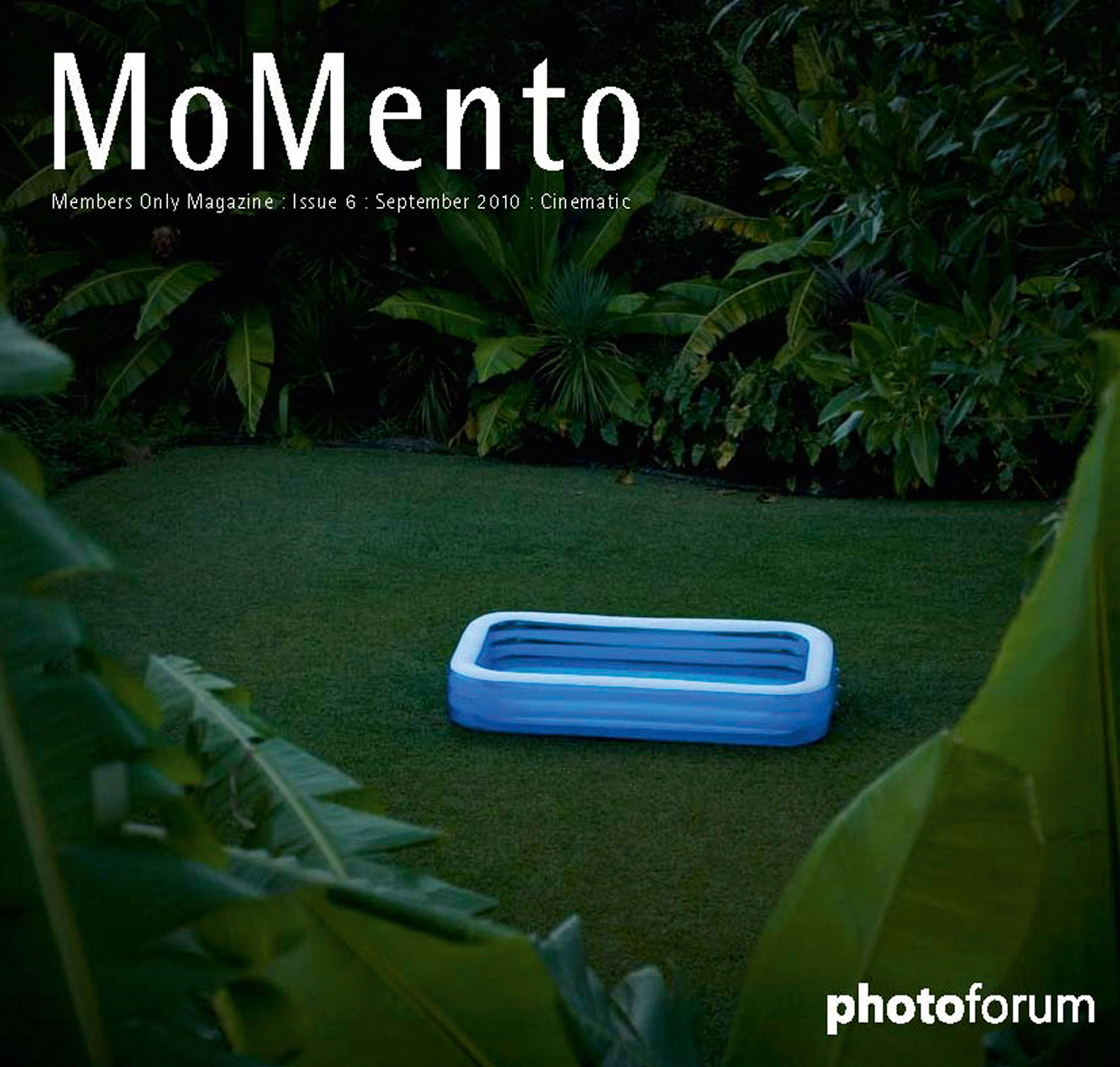PhotoForum MoMento 6 (September 2010): Cinematic. Roberta Thornley, James K. Lowe, and Greta Anderson
PhotoForum MoMento 6 (September 2010): Cinematic. Roberta Thornley, James K. Lowe, and Greta Anderson
MoMento 6: Cinematic. Roberta Thornley, James K. Lowe, and Greta Anderson
Published by PhotoForum September, 2010
Editor: Amanda A’Hara
Design: Amanda A’Hara
Text: Serena Bentley
Cover photograph by Roberta Thornley
CINEMATIC
Photography has a complex relationship with the moving image.
Unlike cinema, the photograph functions as a fragment lifted from a continuum. Accordingly, each element a photograph contains hints at a narrative that is ultimately – inevitably - unresolved. Rejecting the ‘snapshot’ in favour of work that is meticulously staged, Greta Anderson, James K. Lowe and Roberta Thornley embrace the tension between photograph and film still, operating in a grey area where stories are built in single frames. And built is a key term here, for the photographs in this issue are carefully conceived and fabricated. Take James K. Lowe for instance, who describes himself as a maker, not taker, of images. Riffing on the work of Gregory Crewdson and Philip-Lorca diCorcia, Lowe sets his scenes within the urban landscape. These environments serve as stage sets upon which intense psychodramas unfold. Lowe keenly examines the intricacies of human interaction and emotion; his figures often appear lost in thought. This is the case with the female character who carries a small boy in Home (2010). Nuzzled in the safety of his bearer’s neck, the child’s gaze meets our own, his stare amplified by the retro boy painting propped up on the deck behind him. It is this exchange that captivates the viewer and implicates us in Lowe’s mysterious narrative.
For Greta Anderson, it is not human exchanges, but the surroundings in which her figures appear that are important. Often her subjects complement (or even compete with) the environments they occupy. In Film Stills – Part-time (1998) a woman clad in a white swimsuit crouches beneath a waterfall, her pale skin enlivened by the white spray of water falling behind her. In Film Stills – Part-time 2 (1998), a shirtless man hovers above speckled paving interrupted by a curious protrusion of conifer. Nature always seems to find a way in. Anderson’s landscapes are key to our understanding of the images. Rather than simply providing a backdrop, these exquisite surroundings have a force of their own. Witness Film Stills – Hood’s (2009), shrubby tree. Reaching skywards, its shadow creeps like gnarled fingers across the yard. Sometimes the photographer gives the environment free reign by physically containing her subjects.
Film Stills – Part-time 3, (1998), presents a figure enclosed in an inflatable pool. Pushed to the side of the frame and consumed by his aqua cell, our attention is instead drawn to a common garden shrub, spot-lit in vibrant yellow while Auckland’s sky tower beckons beacon-like in the distance. In this way, inanimate objects contribute directly to a photograph’s mise-en-scène. Roberta Thornley amplifies their significance by omitting human figures completely. In Float (2010) and Couple (2009) , Thornley focuses on the everyday. Toying with the uncanny, she re-presents the immediately familiar as unusual or strange. Essentially mundane items like plastic chairs and inflatable kiddies’ pools emerge from murky suburban backgrounds. Unfettered by human imposition, the objects are anthropomorphized, lit by a dull glow. The stillness of each frame enables the sculptural quality of the objects to shine through. In Couple curious stacks of chairs, almost tipping in on themselves reflect in their shape a visual relationship with the curving banana fronds that grow behind them. Slowly, Thornley’s sophisticated compositions reveal themselves. Even in peopled scenes the objects Thornley selects retain their power. A lurid red fly-swat (in Forest 2008 ) and flaccid netting (in Net 2007 ) operate as clues that hint at a wider narrative. The artists featured here reveal the power of the photo-story. Unlike cinema, their work is not confined by a set duration. As viewers, we have the ability to explore these photographs at our own pace, and in doing so, actively participate in the construction of meaning.
Serena Bentley


